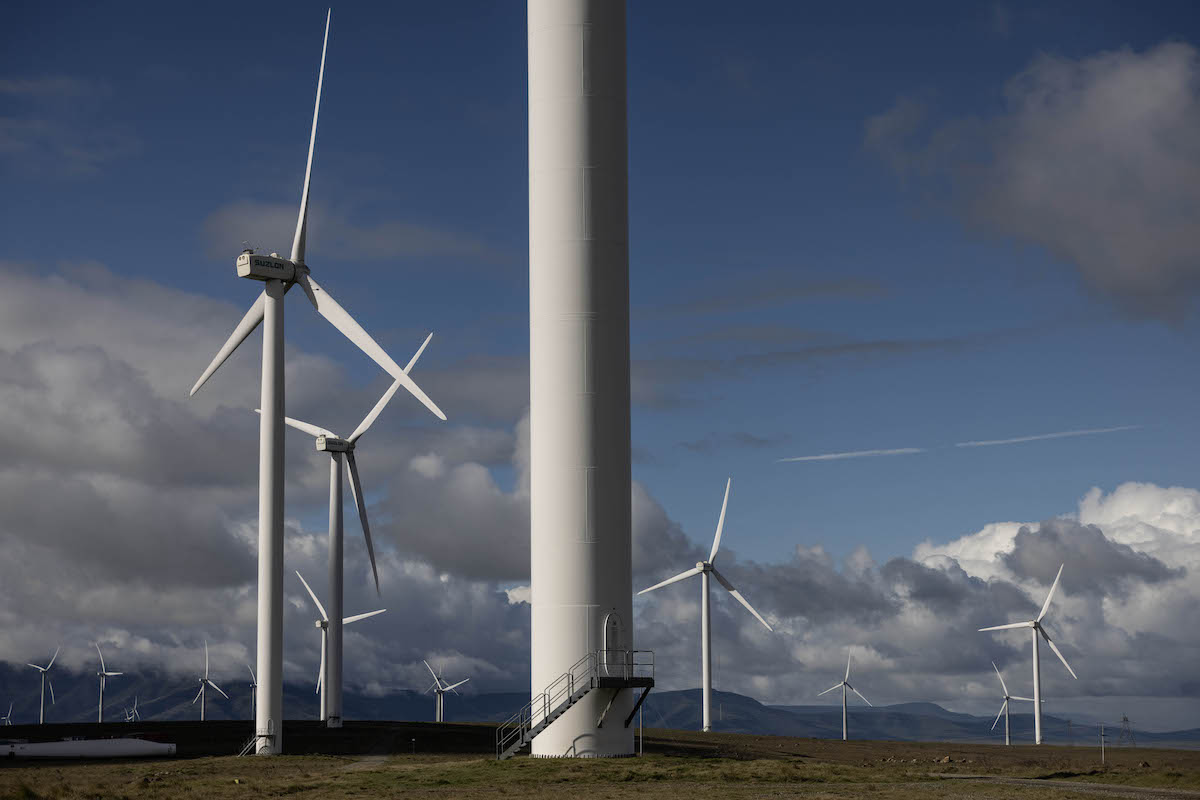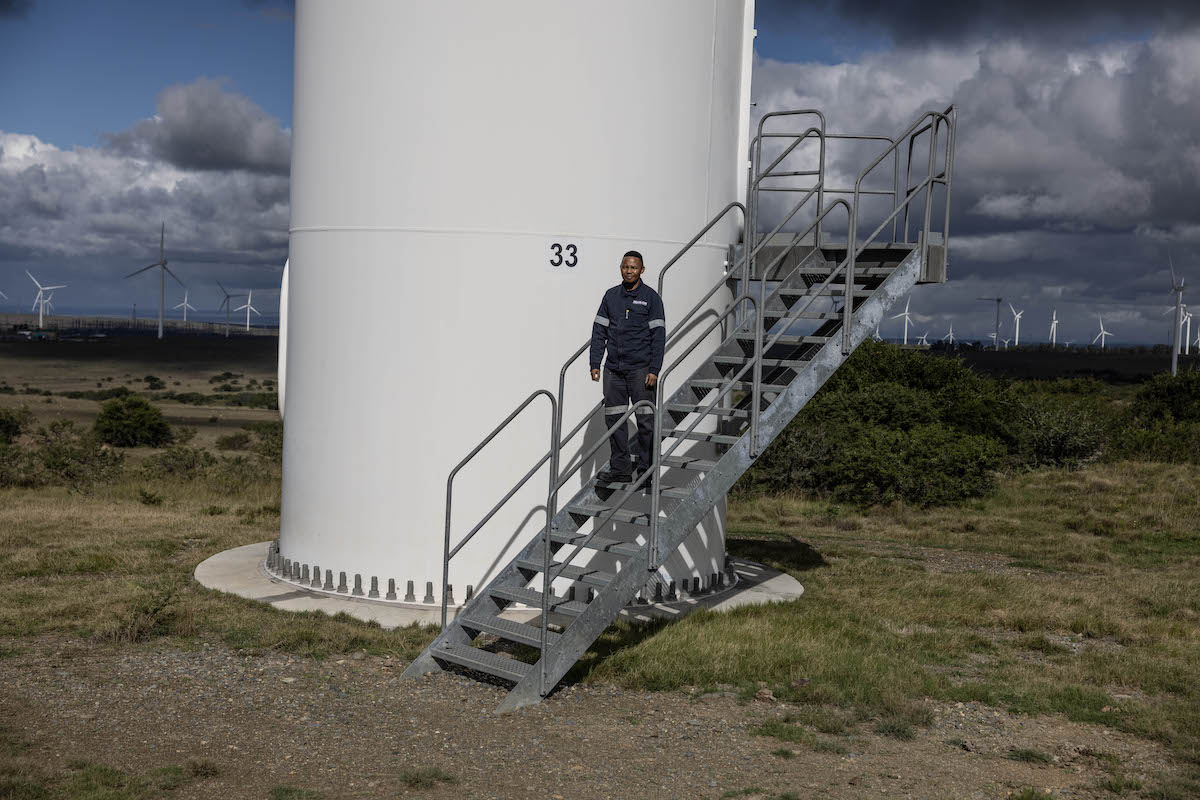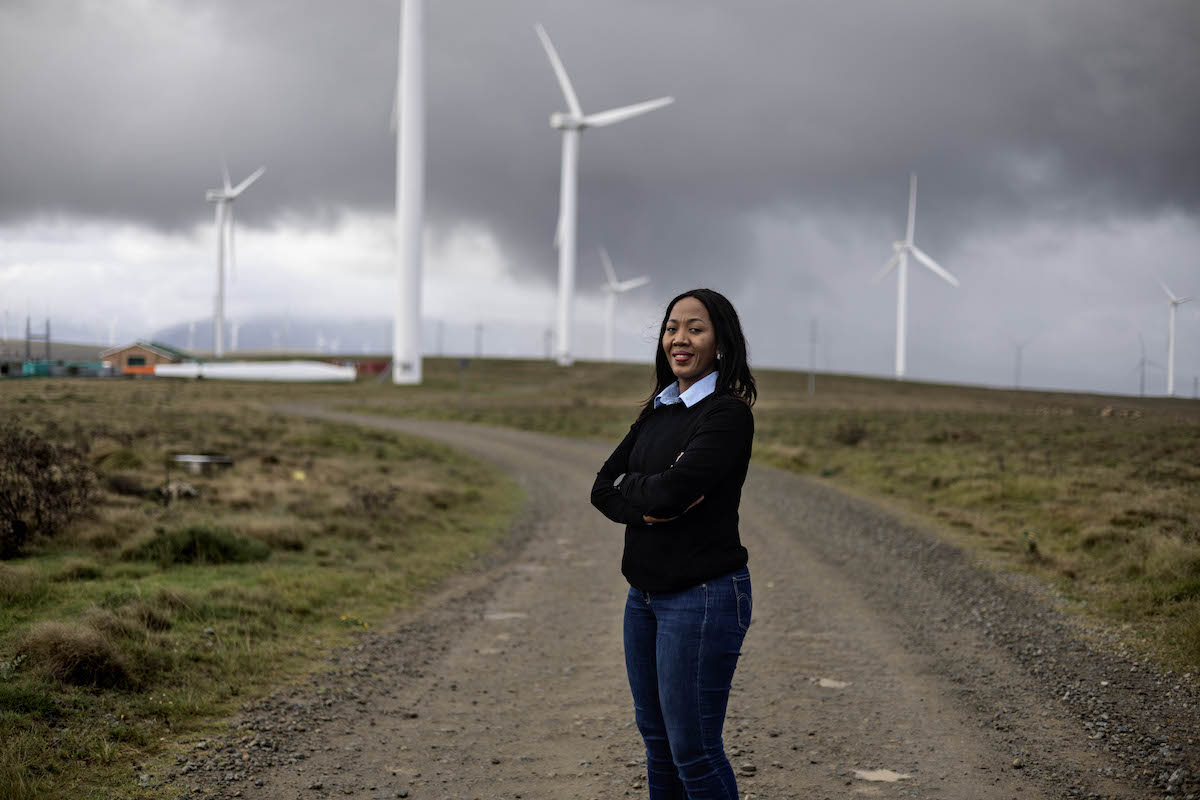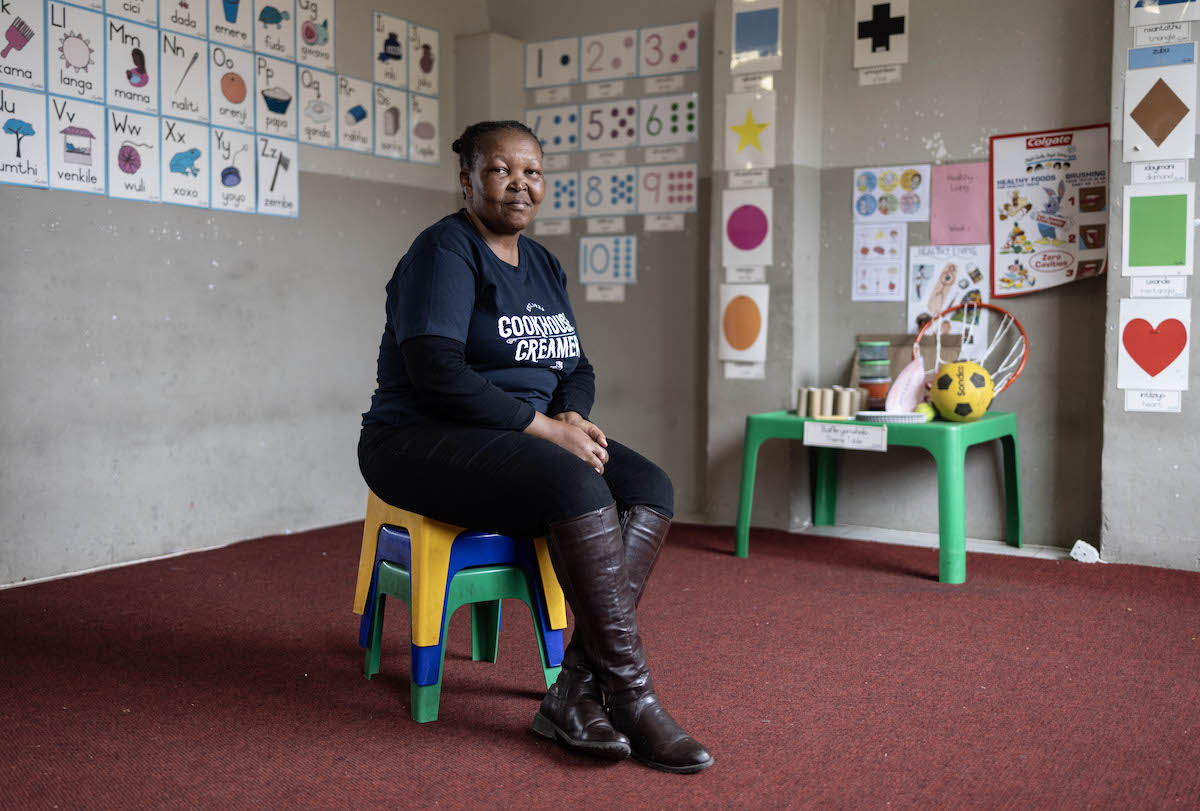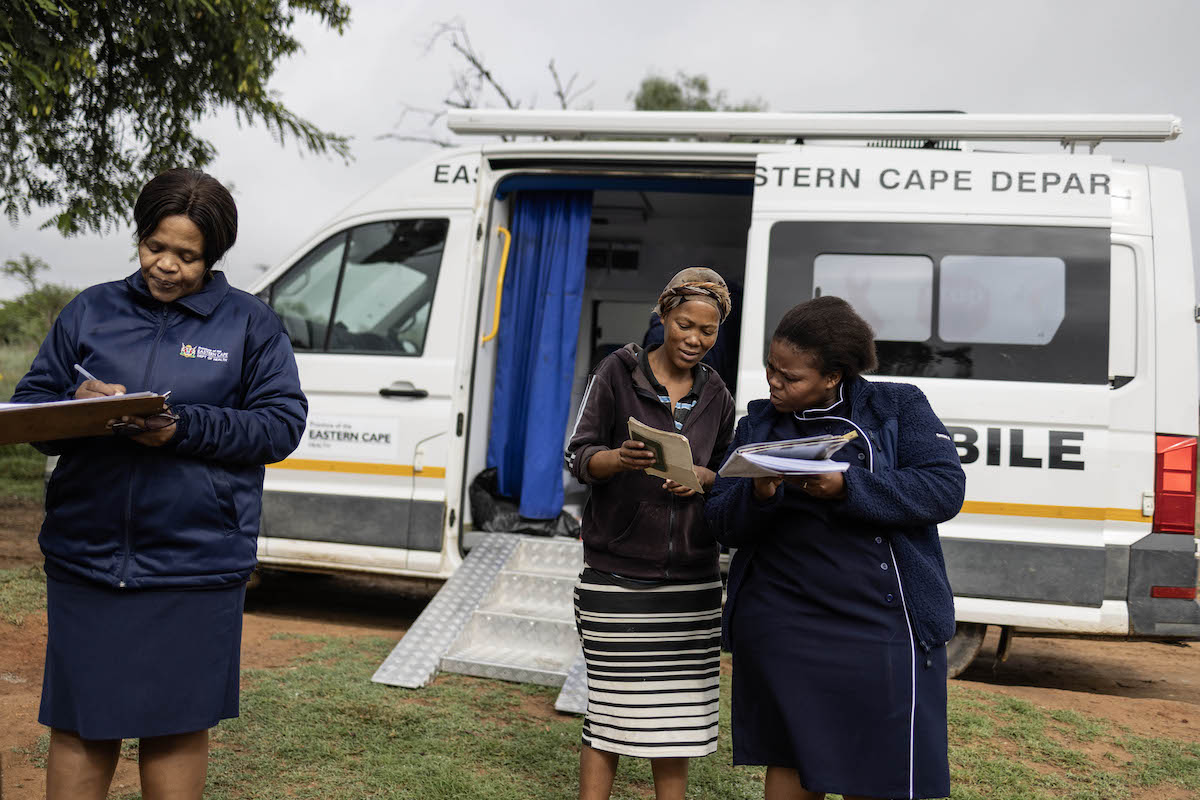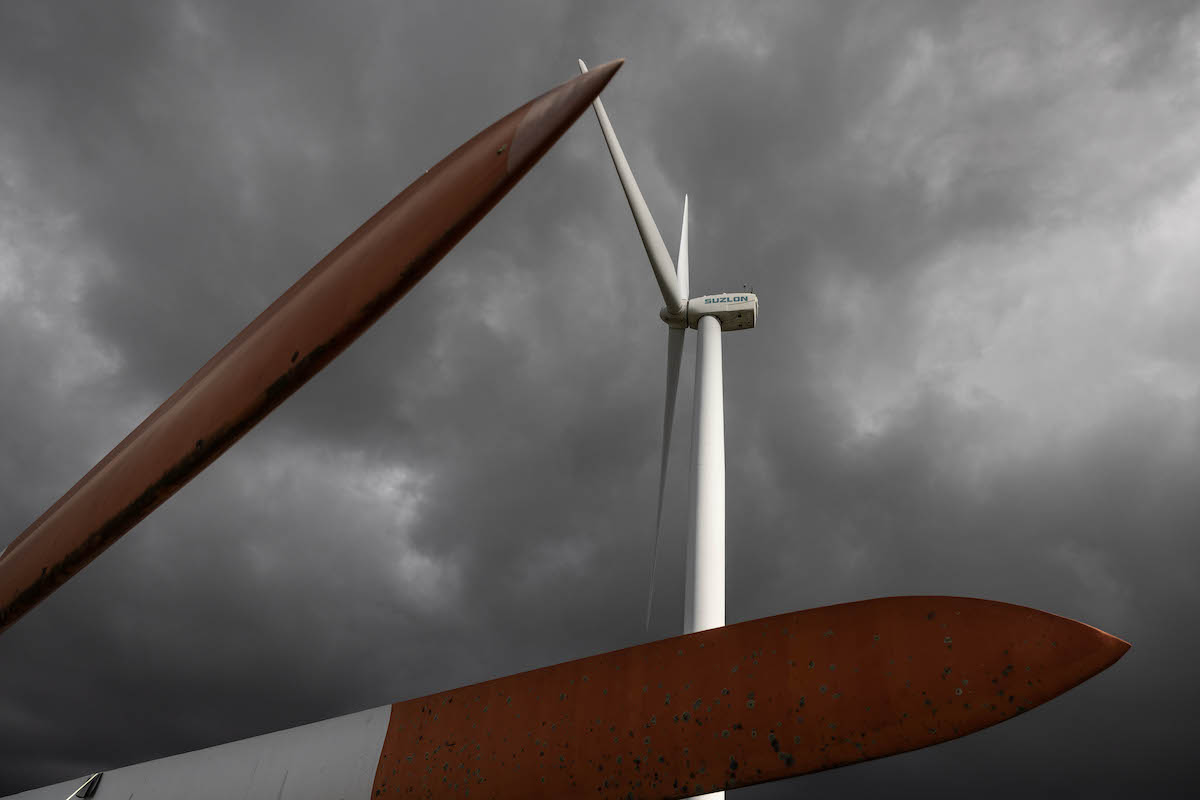Seipati Matli, the wind farm’s technical manager since December 2022, says maintenance runs on a strict six-monthly schedule to ensure optimal reliability and energy generation, along with high standards of health and safety for the personnel and plant.
She anticipates that the wind farm will be able to maintain its current output, or perhaps even improve upon it.
‘Production depends on the wind resource; the turbines are positioned on the site for maximum productivity, even though they don’t all turn at the same speed at any given moment.
‘The high wind season is from April to September or October; that’s when our production is at its highest. November to March is the low season.’
Matli, who studied electrical engineering at the Central University of Technology in Bloemfontein, became interested in renewable energy during her learnership at Conco Group Africa, an energy infrastructure service provider, during the building and commissioning of a substation for renewable energy.
Equally important in her role is stakeholder relationships; she frequently meets with the farmers on whose land the turbines are built, as well as with the stakeholder communities.
Community Centred
The wind farm has an unusually large community shareholding: a community trust representing local residents owns 25% of the company, alongside Old Mutual and a number of funds managed by African Infrastructure Investment Managers.
Its strong community focus has enabled the wind farm to create opportunities beyond renewable energy in the four surrounding towns of KwaNojoli (Somerset East), Cookhouse, Bedford and Adelaide.
It employs local small- and medium-sized enterprises for services such as security, cleaning and bird monitoring, as well as any construction work needed on site.
It pays for the employment of around 20 teachers and subsidises a mobile clinic in partnership with the Eastern Cape Department of Health that treats around 5,000 patients a quarter.
Its bursary fund has produced a medical doctor and accounting graduate, and it has been deeply involved in early childhood development (ECD), contributing to the training of 47 ECD practitioners and contributing to building, renovation, furniture and appliances as well as teaching aids and nutrition for 28 ECD centres.
